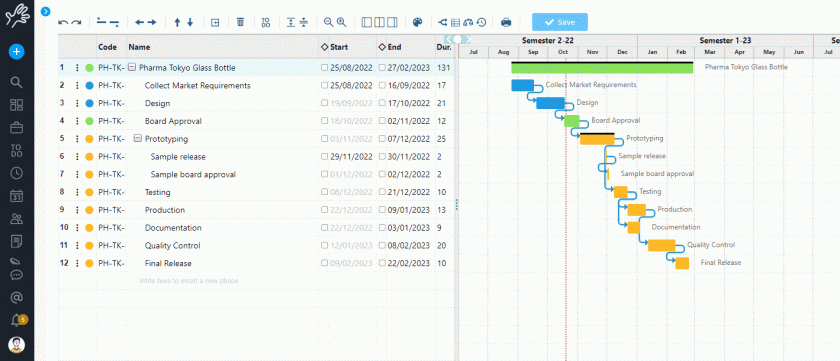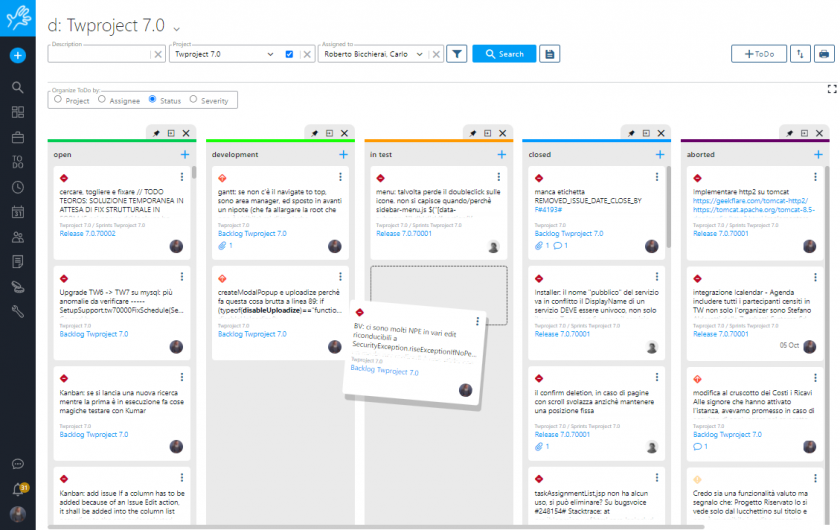The project management universe is broad, yet project management techniques, planning, and control are the common thread that links this discipline together.
These strategies help make work easier and more effective and can be implemented on any project, no matter the field or industry.
There are many project management techniques to choose from; so, let’s see what are the best known and most effective in this article.
CONTENT
Why are project management techniques important?
When starting a project, there are so many unknown variables that it is easy to feel overwhelmed.
This is where having a set of project management processes and techniques helps.
This allows you to keep all the moving parts of a project organized within a coherent set of activities, without leaving anything to chance.
To improve this process, you can also acquire techniques and skills through a pmp certification training course.
Still, by no means all project management techniques are executed in the same way.
Based on the type of project, as well as the team and corporate culture, you can choose a strategy that best suits your needs.
Also, within the same organization, different techniques might be preferred for different projects.
The rule of thumb is: the technique should fit a project, not the other way around.
Furthermore, internal and external conditions may change during the project life cycle, and the project manager must be able to react to these changes flexibly and proactively.
Regardless of which technique is adopted, good project management software can assist in managing and achieving results in a faster and easier fashion.
Let us see which project management techniques we can use for projects.
6 project management techniques, project planning and project controlling
1. Work Breakdown Structure (WBS)
When you first visualize a project, whatever its size, you may feel overwhelmed.
Among the most common reasons why projects take longer, cost more, and ultimately fail is because the work lacks proper structure.
Therefore, project managers need to structure the work into smaller, and more manageable tasks – a process that is often called Work Breakdown Structure.
A WBS turns large project tasks into manageable blocks of activities by levels and dependencies.
This allows the project team to easily understand and complete their work.
To adopt this technique, you first start with the end result of the project and work backward to delineate the whole sequence of activities that the team must complete to get to the finish line.
2. Gantt Charts
Gantt charts are a great project management technique for both newbies and professionals.
They are a graphic representation of all the activities that a team needs to complete to complete a project.
By using a Gantt chart, you can visualize dependencies of activities, the time required for the work, and how the length of each activity will affect start dates and deadlines.

3. Critical Path Method (CPM)
The Critical Path Method is one of the project management techniques used to painstakingly plan all project activities.
In this case, the so-called “critical path,” that is, the shortest path to project completion, is calculated and activities are planned accordingly.
CPM involves the creation of a project model that includes a list of all activities or a WBS, the completion time for each, potential dependencies, milestones and deliverables.
Having this information, the longest completion path can be calculated in accordance with the planned activities.
By following this method, you can identify which activities are critical to your project and which ones are movable and can be pushed back without extending the schedule.
This technique is most suitable for complex projects involving many task dependencies.

4. Waterfall
The Waterfall methodology is one of the oldest project management techniques.
By using this strategy, activities will flow in a linear manner through 5 stages:
- Requirements collection – where you get all the necessary documentation;
- Planning, creating a list of activities;
- Implementation – tasks are completed;
- Verification, where final results are reviewed;
- Maintenance, where output is adjusted where necessary.
The Waterfall methodology works excellently in projects that have distinct phases and require only a few iterations.
5. Kanban
Kanban is one of the most straightforward project management techniques to use.
Its philosophy lies in the creation of three columns:
- To Do
- Ongoing
- Completed
So, you simply move tasks from one column to another.
Kanban is particularly effective for simpler projects or project teams prone to multitasking.

6. Scrum
The Scrum technique is one of the most popular Agile methodologies in project management.
Here you would work with the so-called “sprints,” in which you focus on a specific feature or end result. These sprints usually last no more than two weeks.
At the end of each sprint, you should hold a review meeting with your whole team, provide suggestions for improving the next sprint, and then continue with your work.
Ultimately, the Scrum method allows each project to be completed with maximum efficiency.
Also, this technique often allows projects to be completed sooner than other traditional techniques, which is convenient for companies that need to focus on speed-to-market.
The Scrum methodology is best suited for software development project teams and, generally, for complex projects that require multiple iterations throughout their lifecycle.
Each of these project management, project planning, and project controlling techniques discussed in this article comes with its own pros and cons.
In addition to the above, it is crucial to emphasise the importance of quality management in project management. The quality of the end product must always be a central concern, and the project manager must implement all necessary measures to ensure that quality standards are met.
In addition to these basic techniques, there are numerous other project management methodologies and tools that can be used to effectively plan and control projects. The choice of the most suitable methodology depends on the type of project, its size, complexity and available resources.
To implement these techniques effectively, the use of project management tools such as Twproject is essential. The software offers advanced functionalities to manage tasks, monitor progress and collaborate with team members efficiently. It also facilitates the organisation of tasks by providing analyses and reports that help make informed decisions.
Having a well-defined workflow helps maintain consistency and efficiency. The use of project management tools can facilitate the creation and management of optimised workflows, ensuring that all activities run smoothly and in a coordinated manner.
Try it for free.




